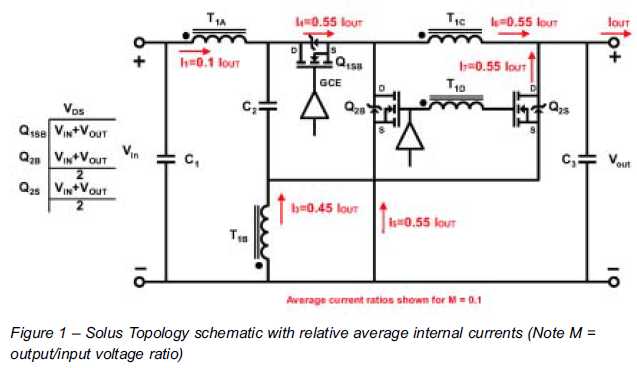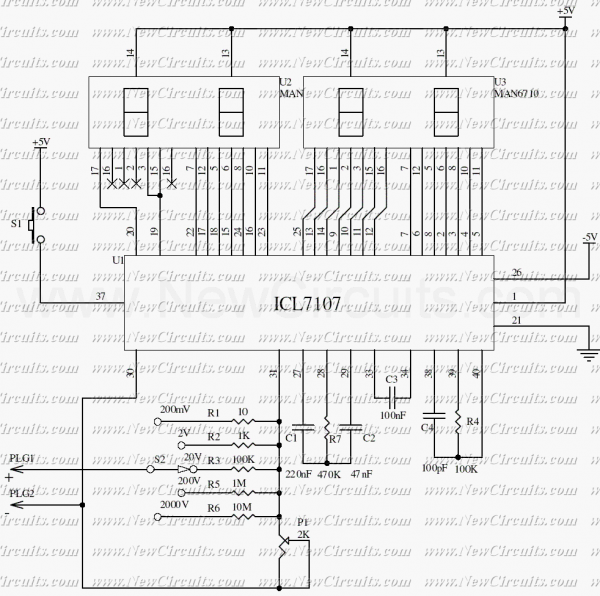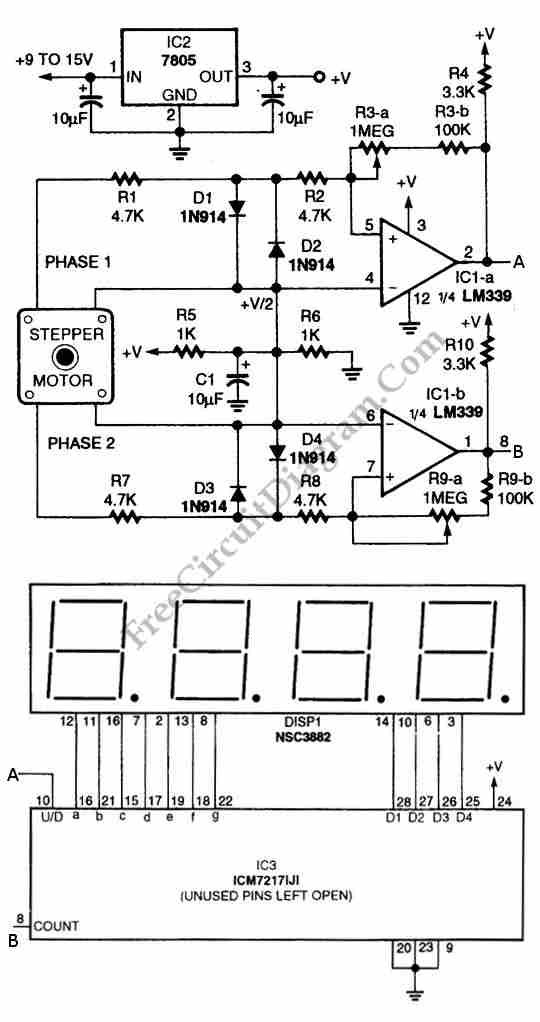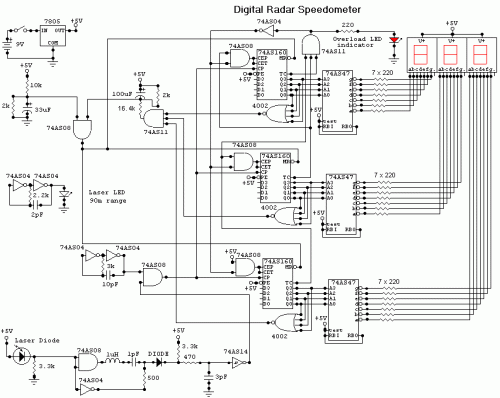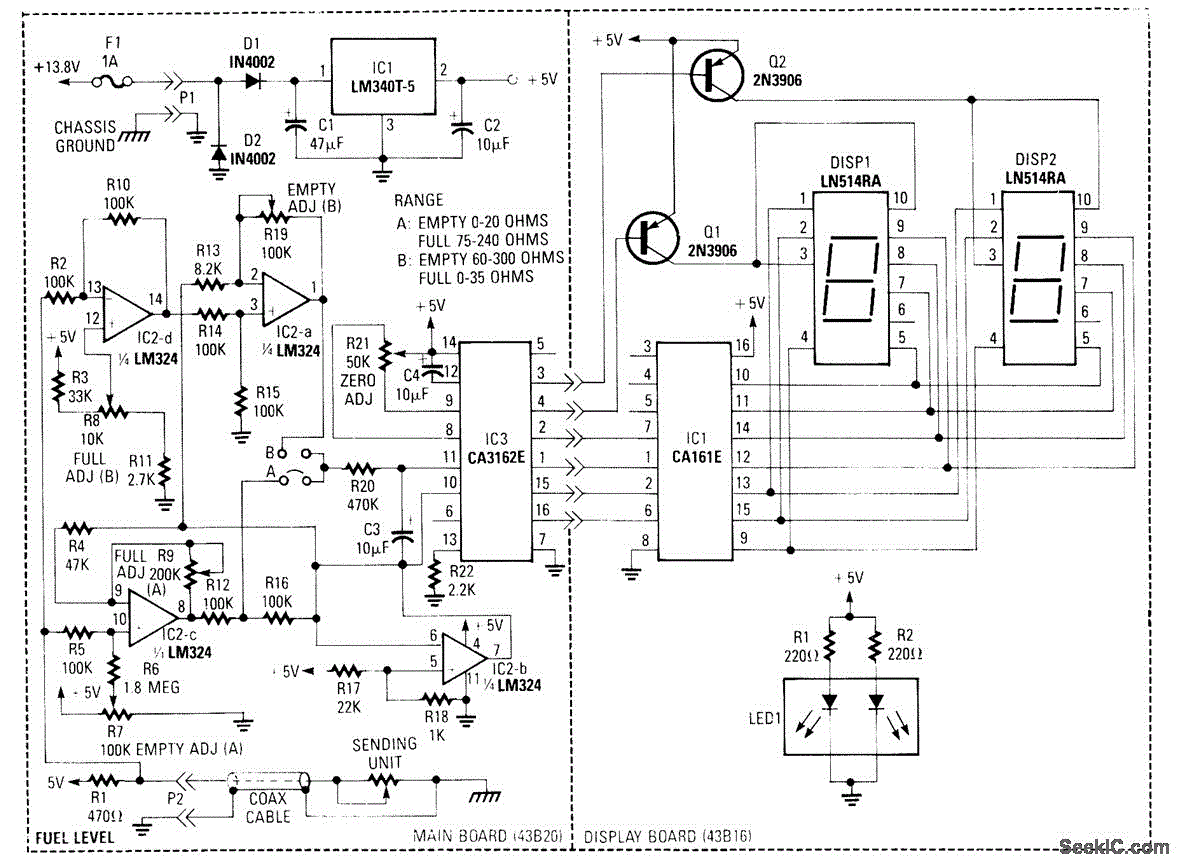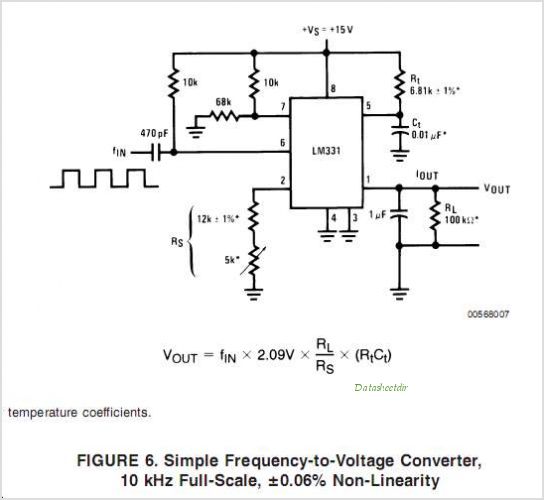
16 bit Analogue to Digital Converter LTC1052

The circuit is an analog-to-digital (A/D) converter that consists of an operational amplifier (A2), a flip-flop, several logic gates, and a current sink. It employs a current balancing technique. The LTC 1052 is utilized for stabilization, ensuring that the input voltage remains drift-free within a range of ±1°C to eliminate offset errors in the analog input.
The input voltage range for this A/D converter is specified to be from 0 to 5 volts.
This A/D converter circuit integrates several key components to achieve its functionality. The operational amplifier (A2) serves as a critical element in amplifying the analog signal before conversion. The choice of the LTC 1052 is particularly important due to its low drift characteristics, which help maintain accuracy in the conversion process by minimizing any offset errors that could arise from temperature fluctuations.
The flip-flop within the circuit plays a vital role in storing the converted digital output, ensuring that the data remains stable during the conversion process. Logic gates are incorporated to facilitate the necessary control logic for the conversion sequence, enabling the circuit to function effectively as an A/D converter.
The current sink is essential for providing a stable reference current, which aids in the current balancing technique employed in the circuit. This technique is crucial for achieving high precision in the conversion, as it ensures that the input signal is accurately represented in the digital domain.
Overall, the design of this A/D converter circuit is tailored to provide reliable and accurate conversion of analog signals within the specified input range, making it suitable for various applications in electronic systems requiring precise digital representation of analog inputs.The circuit here is a A/D converter, that consisting of A2, a flip-flop, some doors and a current sink, is based on a current balancing technique. Again, the stabilized LTC 1052 50 no drift of V input 1 ° C is necessary to eliminate the offset errors of aid.
Input has to be from 0-5V.
The input voltage range for this A/D converter is specified to be from 0 to 5 volts.
This A/D converter circuit integrates several key components to achieve its functionality. The operational amplifier (A2) serves as a critical element in amplifying the analog signal before conversion. The choice of the LTC 1052 is particularly important due to its low drift characteristics, which help maintain accuracy in the conversion process by minimizing any offset errors that could arise from temperature fluctuations.
The flip-flop within the circuit plays a vital role in storing the converted digital output, ensuring that the data remains stable during the conversion process. Logic gates are incorporated to facilitate the necessary control logic for the conversion sequence, enabling the circuit to function effectively as an A/D converter.
The current sink is essential for providing a stable reference current, which aids in the current balancing technique employed in the circuit. This technique is crucial for achieving high precision in the conversion, as it ensures that the input signal is accurately represented in the digital domain.
Overall, the design of this A/D converter circuit is tailored to provide reliable and accurate conversion of analog signals within the specified input range, making it suitable for various applications in electronic systems requiring precise digital representation of analog inputs.The circuit here is a A/D converter, that consisting of A2, a flip-flop, some doors and a current sink, is based on a current balancing technique. Again, the stabilized LTC 1052 50 no drift of V input 1 ° C is necessary to eliminate the offset errors of aid.
Input has to be from 0-5V.
